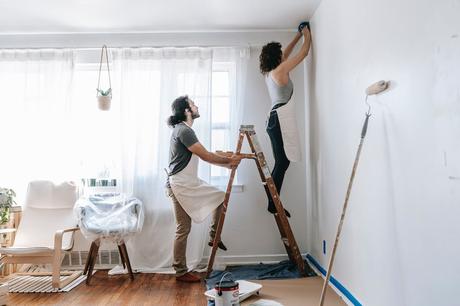If you are performing a home upgrade or building one from scratch, one of your major considerations will be the finish you give your interior walls in color and texture. But before you paint your walls, you have to prep them. There are two main ways of preparing walls for painting; plastering or installing a lining paper.
Each option has pros and cons you should know before picking one. This guide highlights these pros and cons, so you may want to understand to know what to expect from each option fully.

Photo credit: Pexels
What Does Plastering EntailAs the name suggests, plastering is applying a layer of plaster on the wall. Plaster is a mixture of cement lime gypsum and water in the form of a paste which is then spread on the walls using trowels. Once applied, the plaster is left to dry and then sanded to create the desired texture and finish.
Pros of plasterPlaster installation involves applying several coats of plaster over each other, usually three. This multi-layer application ensures that all the imperfections on the walls are covered, allowing for an event and seamless finish.
Using cement in the mixture ensures that the paste hardens when dry, meaning it will last longer. So if you want a more durable option, this is it.
Plaster is more versatile in terms of the results. Most homeowners prefer a smooth finish to the walls before painting. But here are a few that prefer textures or decorative finish. Both finishes are possible when using plaster.
ConsThe pros of a plaster finish come at a cost. So you can expect to spend more on a plastered finish than lining paper. So if you are in the construction industry and doing large-scale plastering, it is important to streamline plastering payments and invoicing to ensure that you do not make estimates that could make you lose or lose business to your competition.
It can also be quite labor intensive, and a professional must install it for you. Once you apply plaster, making changes can be a big challenge, significantly increasing the costs of repairs.
What Does Applying Paper Lining Entail?Lining paper involves sticking a specialized paper on the wall using adhesives. The process is as simple as measuring the wall dimensions, cutting the paper, and sticking it while smoothing it to release air bubbles. The linen paper is then painted or used as a base for wallpaper.
ProsAs you may have guessed, lining paper is significantly cheaper than plastering. First, you do not need expensive materials; you only need self-adhesive lining paper. Secondly, you do not need to have much technical knowledge.
ConsThe most significant disadvantage lining paper over plaster is that it is less durable, especially in high-traffic areas or homes. If you have younger children or pets, the rate of tear and war can be quite high, and you may need to repair them frequently.
Secondly, it may not be as effective in concealing major wall flaws. The only way out of such a situation is to conceal the flaws with plaster and then cover them with lining paper, which can significantly push up the installation cost.
The choice between plastering your walls and applying lining paper is highly dependent on various factors. These include durability, budget, esthetic appearance, and ease of installation. Therefore, ensure you weigh all factors before plastering your walls or using lining paper.
